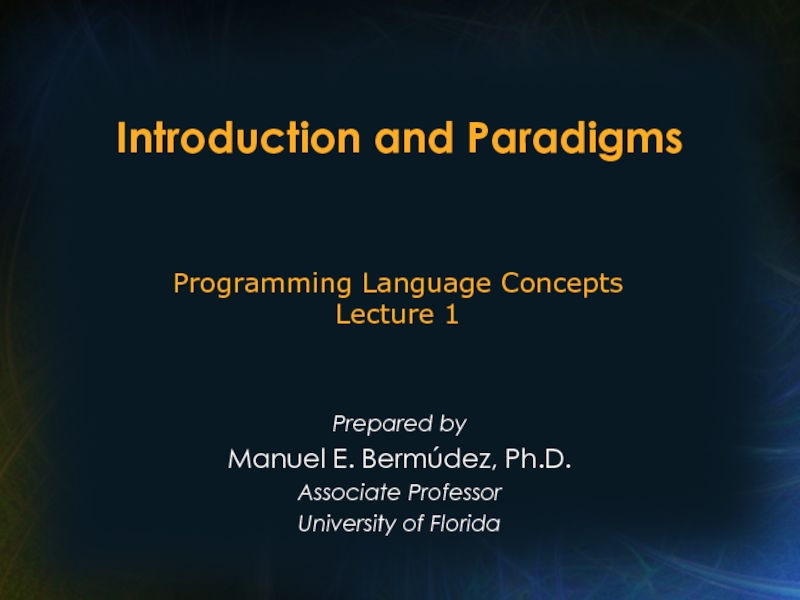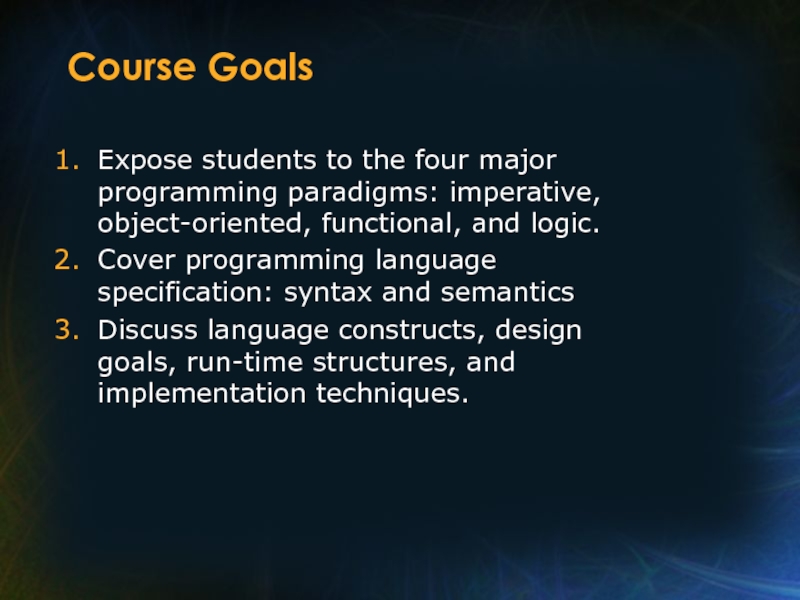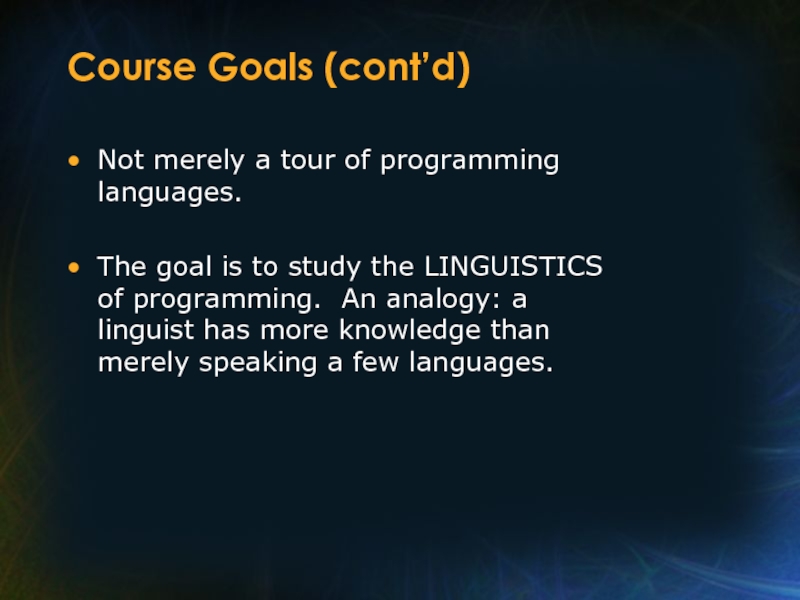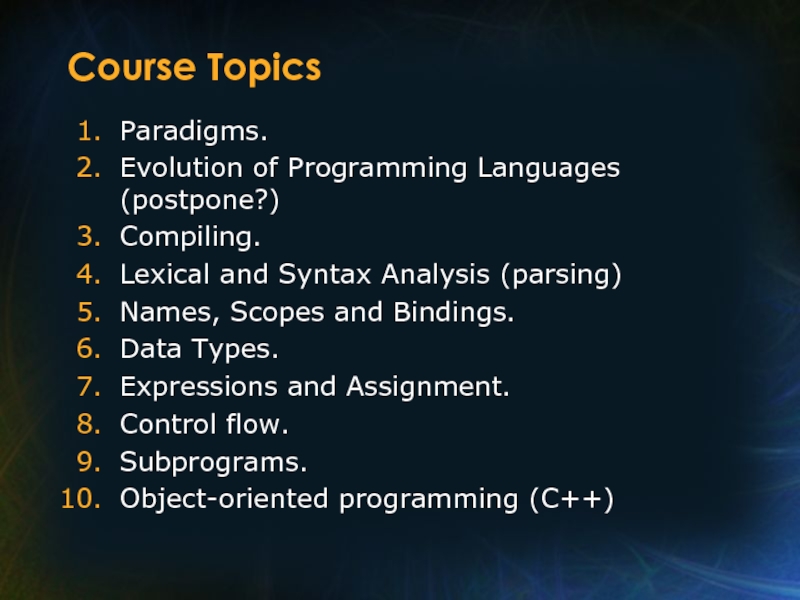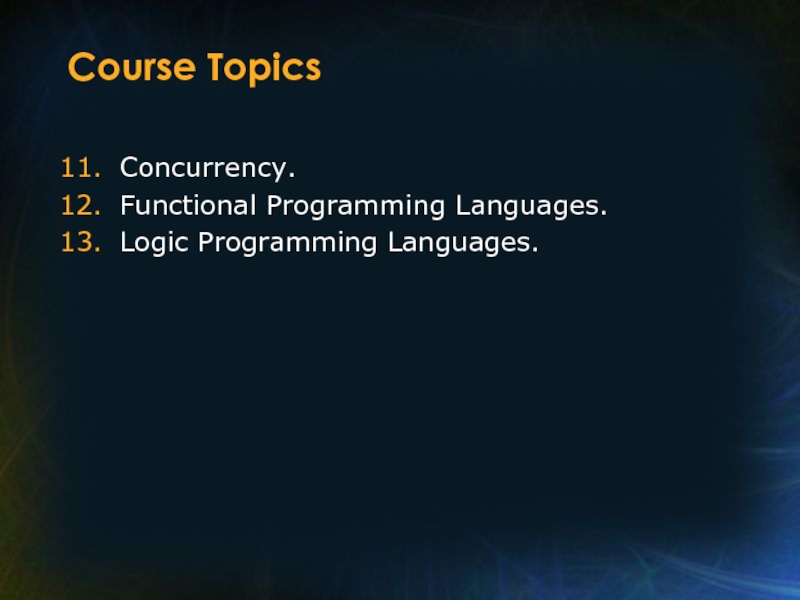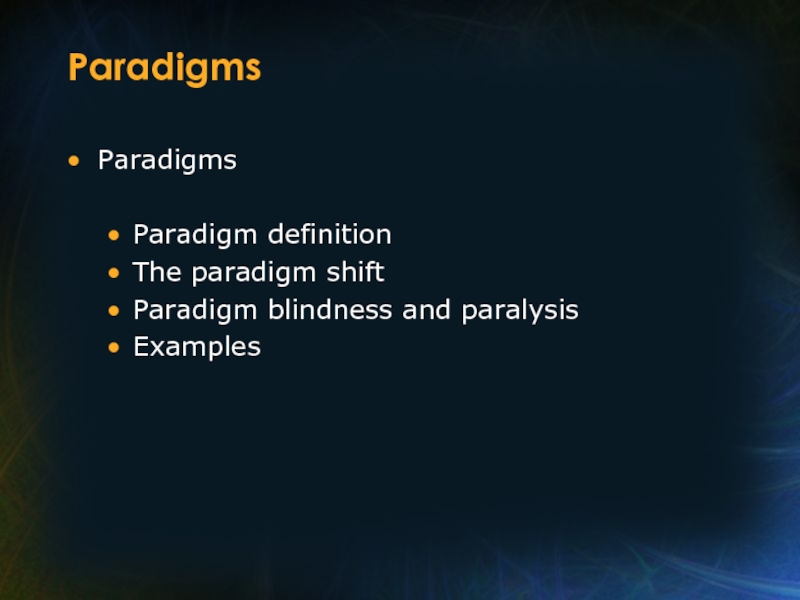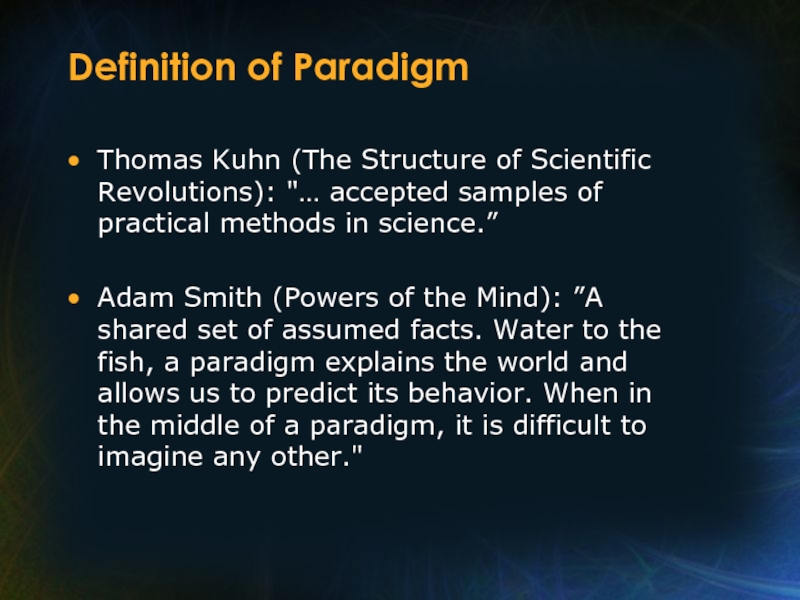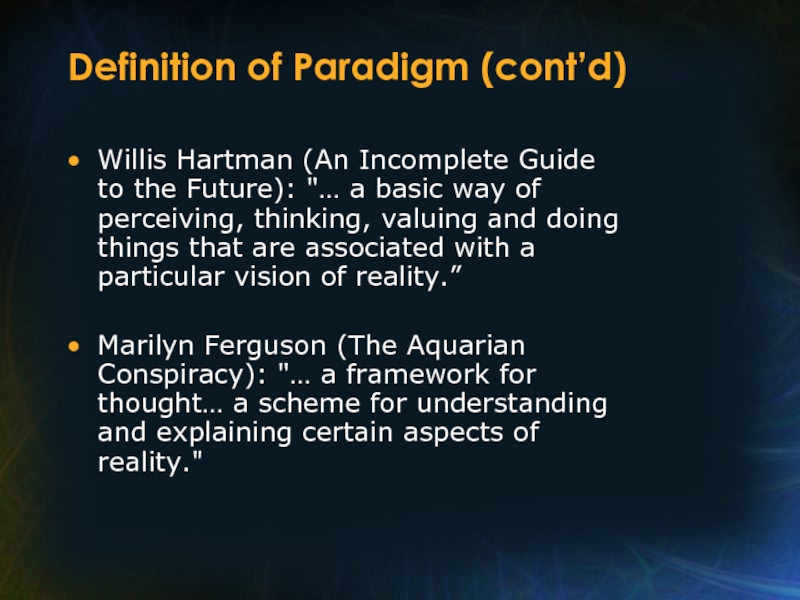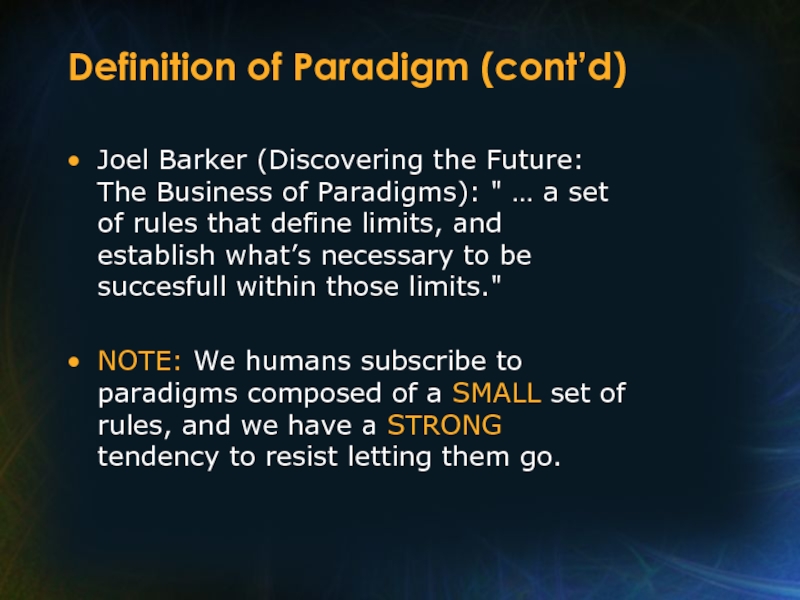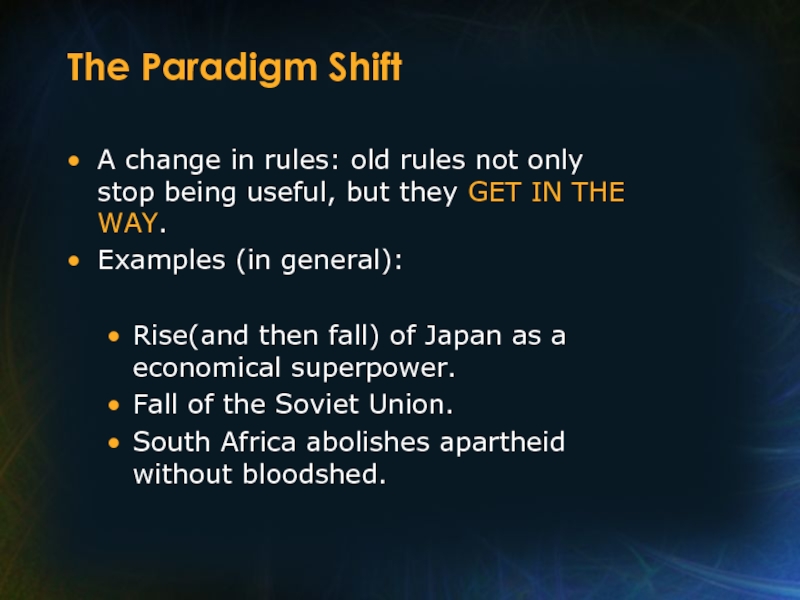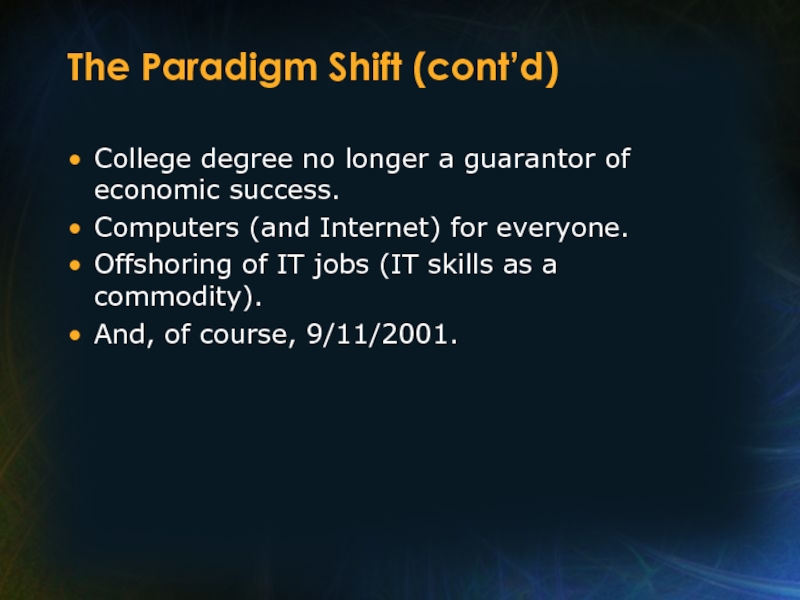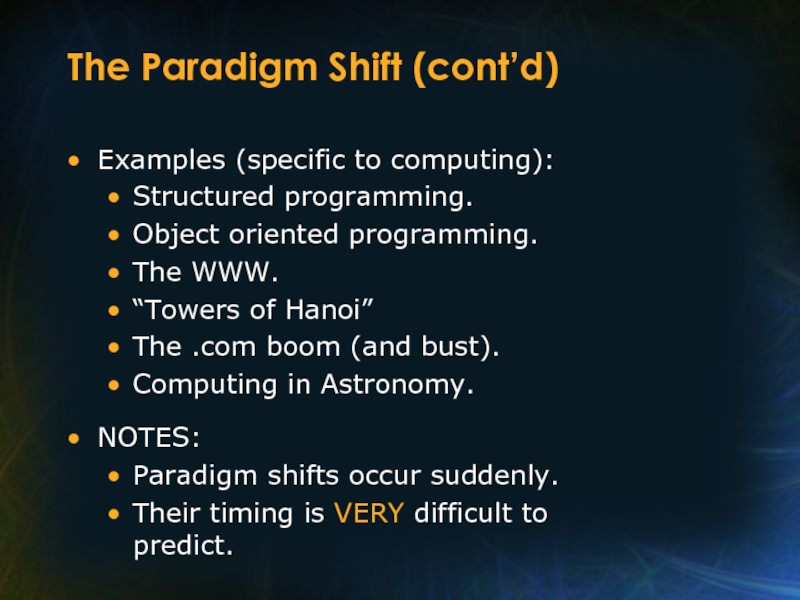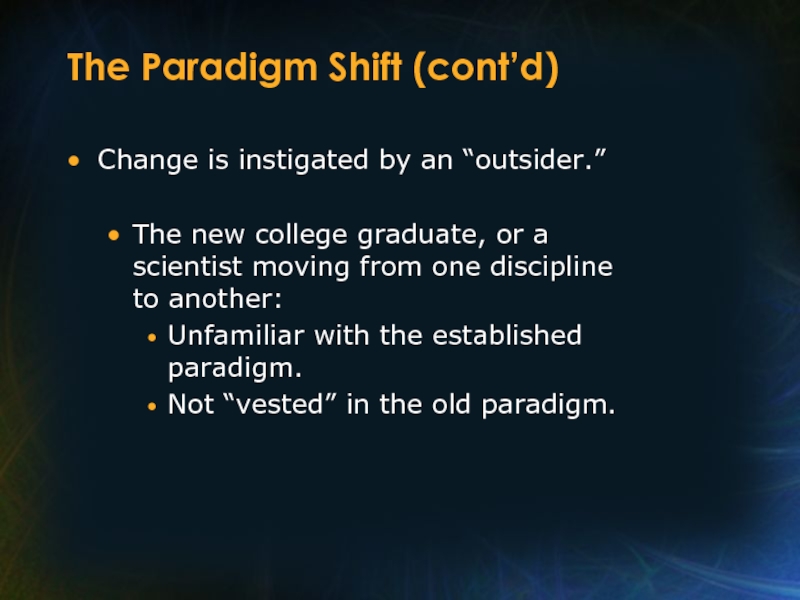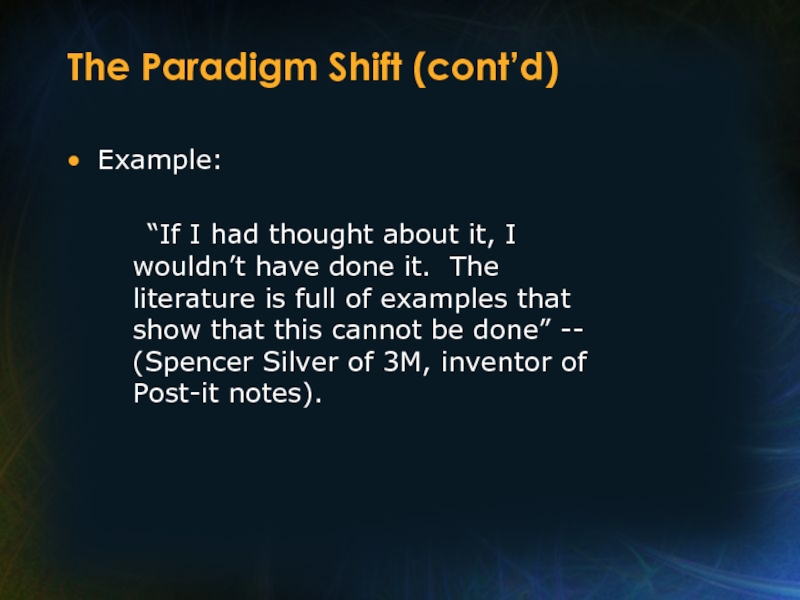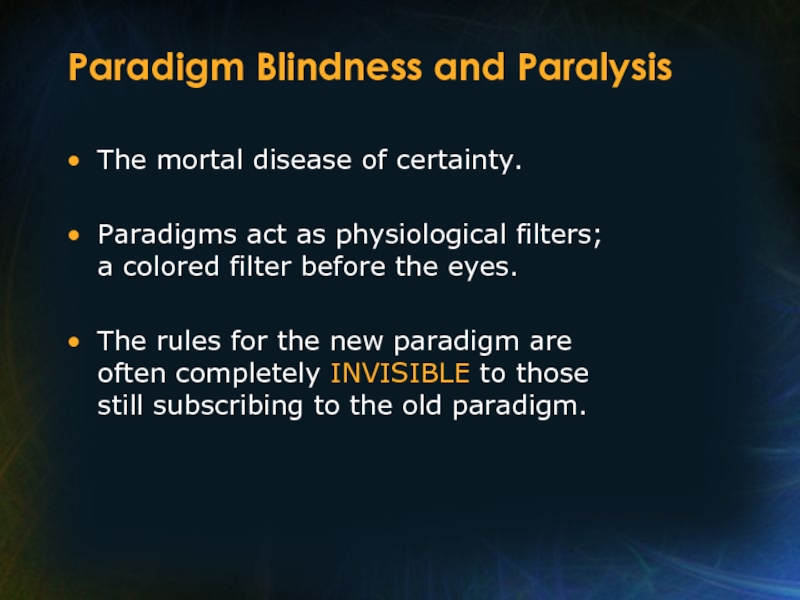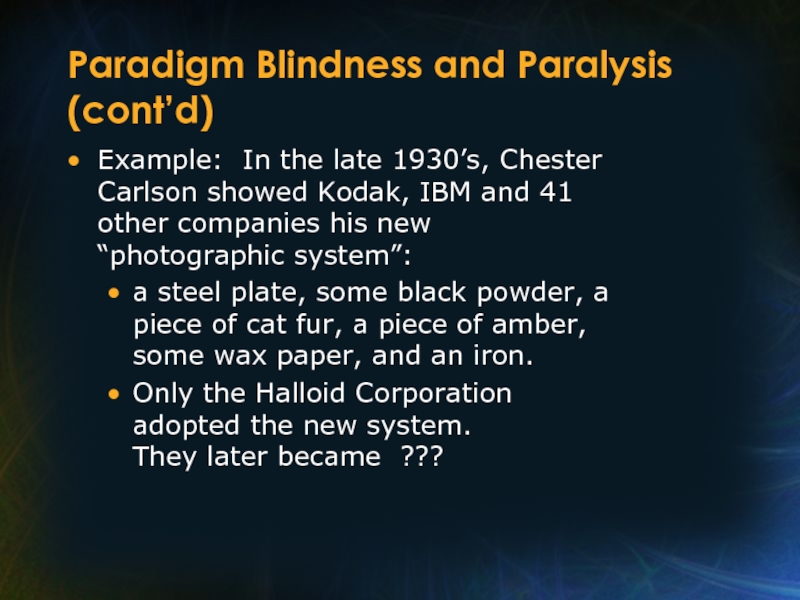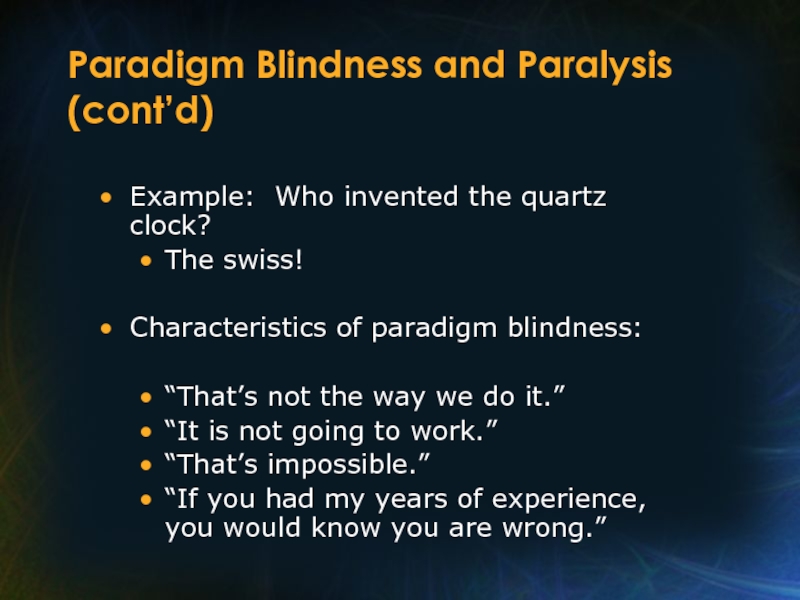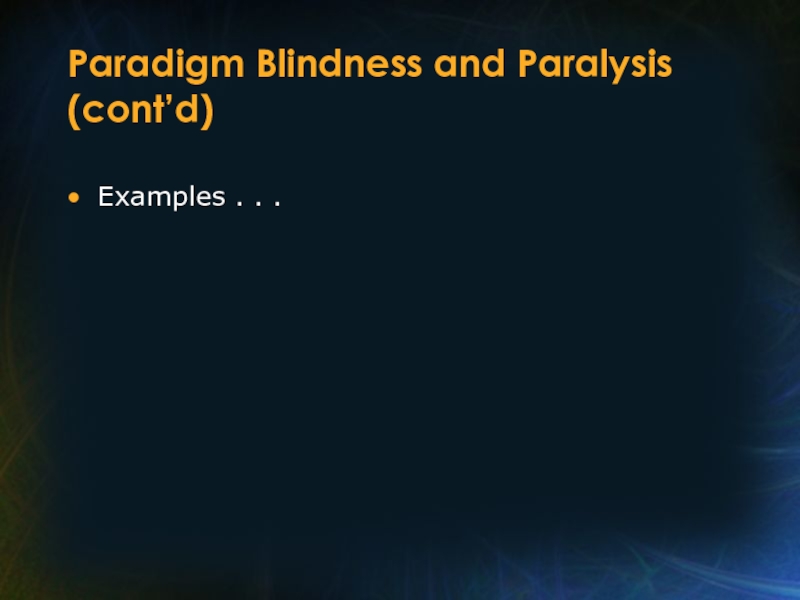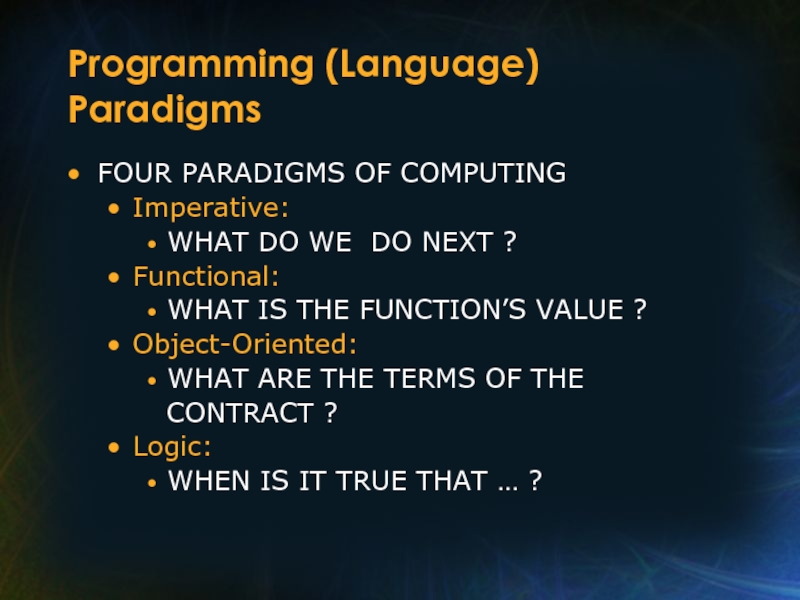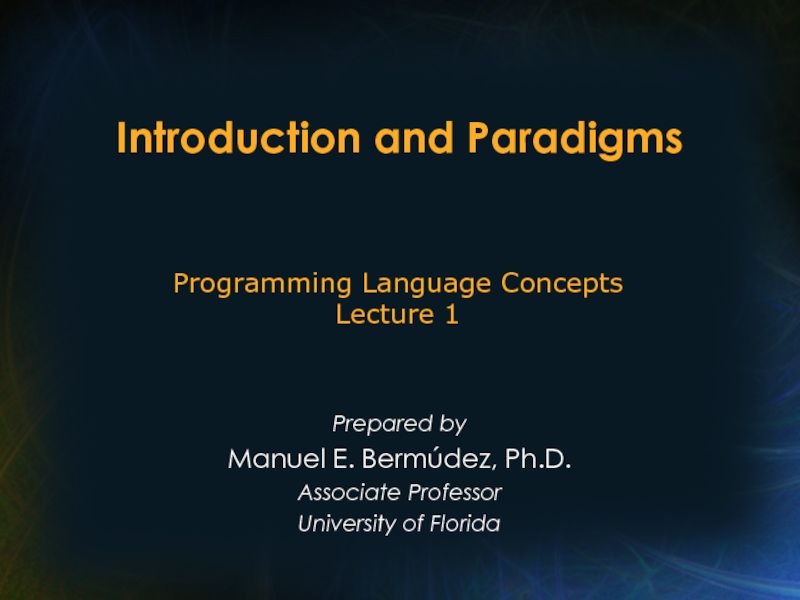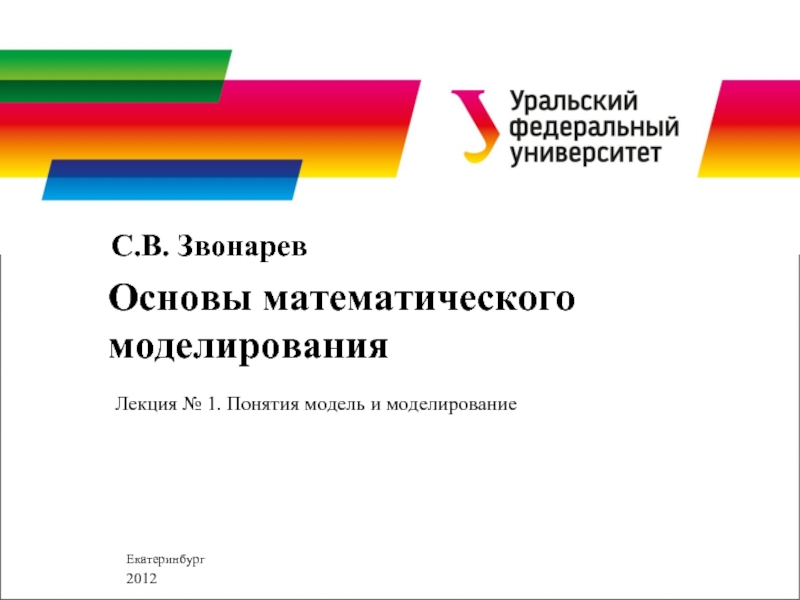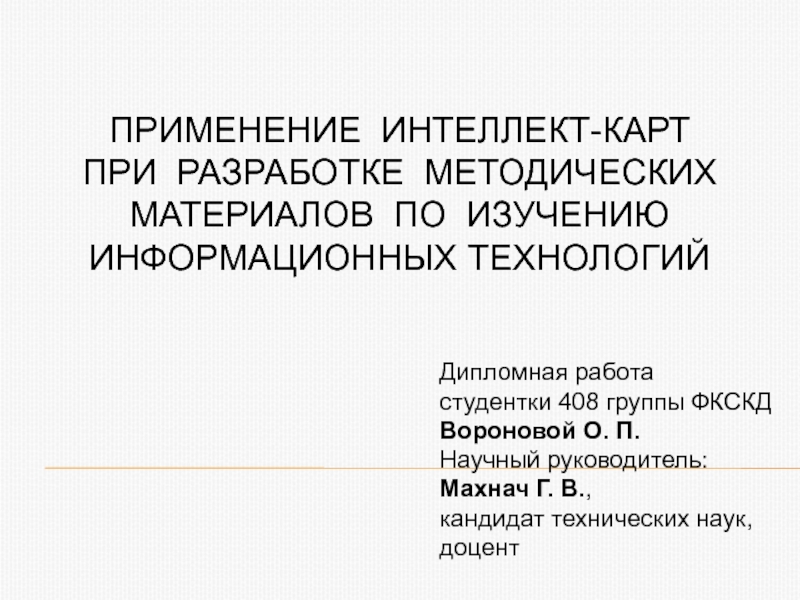Concepts
Lecture 1
- Главная
- Разное
- Дизайн
- Бизнес и предпринимательство
- Аналитика
- Образование
- Развлечения
- Красота и здоровье
- Финансы
- Государство
- Путешествия
- Спорт
- Недвижимость
- Армия
- Графика
- Культурология
- Еда и кулинария
- Лингвистика
- Английский язык
- Астрономия
- Алгебра
- Биология
- География
- Детские презентации
- Информатика
- История
- Литература
- Маркетинг
- Математика
- Медицина
- Менеджмент
- Музыка
- МХК
- Немецкий язык
- ОБЖ
- Обществознание
- Окружающий мир
- Педагогика
- Русский язык
- Технология
- Физика
- Философия
- Химия
- Шаблоны, картинки для презентаций
- Экология
- Экономика
- Юриспруденция
Introduction and paradigms. Programming language concepts. (Lecture 1) презентация
Содержание
- 1. Introduction and paradigms. Programming language concepts. (Lecture 1)
- 2. Course Goals Expose students to the
- 3. Course Goals (cont’d) Not merely a tour
- 4. Course Topics Paradigms. Evolution of Programming
- 5. Course Topics Concurrency. Functional Programming Languages. Logic Programming Languages.
- 6. Paradigms Paradigms Paradigm definition The paradigm shift Paradigm blindness and paralysis Examples
- 7. Definition of Paradigm Thomas Kuhn (The Structure
- 8. Definition of Paradigm (cont’d) Willis Hartman (An
- 9. Definition of Paradigm (cont’d) Joel Barker (Discovering
- 10. The Paradigm Shift A change in rules:
- 11. The Paradigm Shift (cont’d) College degree no
- 12. The Paradigm Shift (cont’d) Examples (specific to
- 13. The Paradigm Shift (cont’d) Change is instigated
- 14. The Paradigm Shift (cont’d) Example:
- 15. Paradigm Blindness and Paralysis The mortal disease
- 16. Paradigm Blindness and Paralysis (cont’d) Example: In
- 17. Paradigm Blindness and Paralysis (cont’d) Example: Who
- 18. Paradigm Blindness and Paralysis (cont’d) Examples . . .
- 19. Programming (Language) Paradigms FOUR PARADIGMS OF COMPUTING
- 20. Introduction and Paradigms Prepared by Manuel E.
Слайд 1Introduction and Paradigms
Prepared by
Manuel E. Bermúdez, Ph.D.
Associate Professor
University of Florida
Programming Language
Слайд 2Course Goals
Expose students to the four major programming paradigms: imperative,
object-oriented, functional, and logic.
Cover programming language specification: syntax and semantics
Discuss language constructs, design goals, run-time structures, and implementation techniques.
Cover programming language specification: syntax and semantics
Discuss language constructs, design goals, run-time structures, and implementation techniques.
Слайд 3Course Goals (cont’d)
Not merely a tour of programming languages.
The goal is
to study the LINGUISTICS of programming. An analogy: a linguist has more knowledge than merely speaking a few languages.
Слайд 4Course Topics
Paradigms.
Evolution of Programming Languages (postpone?)
Compiling.
Lexical and Syntax Analysis (parsing)
Names,
Scopes and Bindings.
Data Types.
Expressions and Assignment.
Control flow.
Subprograms.
Object-oriented programming (C++)
Data Types.
Expressions and Assignment.
Control flow.
Subprograms.
Object-oriented programming (C++)
Слайд 6Paradigms
Paradigms
Paradigm definition
The paradigm shift
Paradigm blindness and paralysis
Examples
Слайд 7Definition of Paradigm
Thomas Kuhn (The Structure of Scientific Revolutions): "… accepted
samples of practical methods in science.”
Adam Smith (Powers of the Mind): ”A shared set of assumed facts. Water to the fish, a paradigm explains the world and allows us to predict its behavior. When in the middle of a paradigm, it is difficult to imagine any other."
Adam Smith (Powers of the Mind): ”A shared set of assumed facts. Water to the fish, a paradigm explains the world and allows us to predict its behavior. When in the middle of a paradigm, it is difficult to imagine any other."
Слайд 8Definition of Paradigm (cont’d)
Willis Hartman (An Incomplete Guide to the Future):
"… a basic way of perceiving, thinking, valuing and doing things that are associated with a particular vision of reality.”
Marilyn Ferguson (The Aquarian Conspiracy): "… a framework for thought… a scheme for understanding and explaining certain aspects of reality."
Marilyn Ferguson (The Aquarian Conspiracy): "… a framework for thought… a scheme for understanding and explaining certain aspects of reality."
Слайд 9Definition of Paradigm (cont’d)
Joel Barker (Discovering the Future: The Business of
Paradigms): " … a set of rules that define limits, and establish what’s necessary to be succesfull within those limits."
NOTE: We humans subscribe to paradigms composed of a SMALL set of rules, and we have a STRONG tendency to resist letting them go.
NOTE: We humans subscribe to paradigms composed of a SMALL set of rules, and we have a STRONG tendency to resist letting them go.
Слайд 10The Paradigm Shift
A change in rules: old rules not only stop
being useful, but they GET IN THE WAY.
Examples (in general):
Rise(and then fall) of Japan as a economical superpower.
Fall of the Soviet Union.
South Africa abolishes apartheid without bloodshed.
Examples (in general):
Rise(and then fall) of Japan as a economical superpower.
Fall of the Soviet Union.
South Africa abolishes apartheid without bloodshed.
Слайд 11The Paradigm Shift (cont’d)
College degree no longer a guarantor of economic
success.
Computers (and Internet) for everyone.
Offshoring of IT jobs (IT skills as a commodity).
And, of course, 9/11/2001.
Computers (and Internet) for everyone.
Offshoring of IT jobs (IT skills as a commodity).
And, of course, 9/11/2001.
Слайд 12The Paradigm Shift (cont’d)
Examples (specific to computing):
Structured programming.
Object oriented programming.
The WWW.
“Towers
of Hanoi”
The .com boom (and bust).
Computing in Astronomy.
NOTES:
Paradigm shifts occur suddenly.
Their timing is VERY difficult to predict.
The .com boom (and bust).
Computing in Astronomy.
NOTES:
Paradigm shifts occur suddenly.
Their timing is VERY difficult to predict.
Слайд 13The Paradigm Shift (cont’d)
Change is instigated by an “outsider.”
The new college
graduate, or a scientist moving from one discipline to another:
Unfamiliar with the established paradigm.
Not “vested” in the old paradigm.
Unfamiliar with the established paradigm.
Not “vested” in the old paradigm.
Слайд 14The Paradigm Shift (cont’d)
Example:
“If I had thought about it, I
wouldn’t have done it. The literature is full of examples that show that this cannot be done” -- (Spencer Silver of 3M, inventor of Post-it notes).
Слайд 15Paradigm Blindness and Paralysis
The mortal disease of certainty.
Paradigms act as physiological
filters; a colored filter before the eyes.
The rules for the new paradigm are often completely INVISIBLE to those still subscribing to the old paradigm.
The rules for the new paradigm are often completely INVISIBLE to those still subscribing to the old paradigm.
Слайд 16Paradigm Blindness and Paralysis (cont’d)
Example: In the late 1930’s, Chester Carlson
showed Kodak, IBM and 41 other companies his new “photographic system”:
a steel plate, some black powder, a piece of cat fur, a piece of amber, some wax paper, and an iron.
Only the Halloid Corporation adopted the new system. They later became ???
a steel plate, some black powder, a piece of cat fur, a piece of amber, some wax paper, and an iron.
Only the Halloid Corporation adopted the new system. They later became ???
Слайд 17Paradigm Blindness and Paralysis (cont’d)
Example: Who invented the quartz clock?
The swiss!
Characteristics
of paradigm blindness:
“That’s not the way we do it.”
“It is not going to work.”
“That’s impossible.”
“If you had my years of experience, you would know you are wrong.”
“That’s not the way we do it.”
“It is not going to work.”
“That’s impossible.”
“If you had my years of experience, you would know you are wrong.”
Слайд 19Programming (Language) Paradigms
FOUR PARADIGMS OF COMPUTING
Imperative:
WHAT DO WE DO NEXT ?
Functional:
WHAT
IS THE FUNCTION’S VALUE ?
Object-Oriented:
WHAT ARE THE TERMS OF THE
CONTRACT ?
Logic:
WHEN IS IT TRUE THAT … ?
Object-Oriented:
WHAT ARE THE TERMS OF THE
CONTRACT ?
Logic:
WHEN IS IT TRUE THAT … ?
Слайд 20Introduction and Paradigms
Prepared by
Manuel E. Bermúdez, Ph.D.
Associate Professor
University of Florida
Programming Language
Concepts
Lecture 1
Lecture 1
